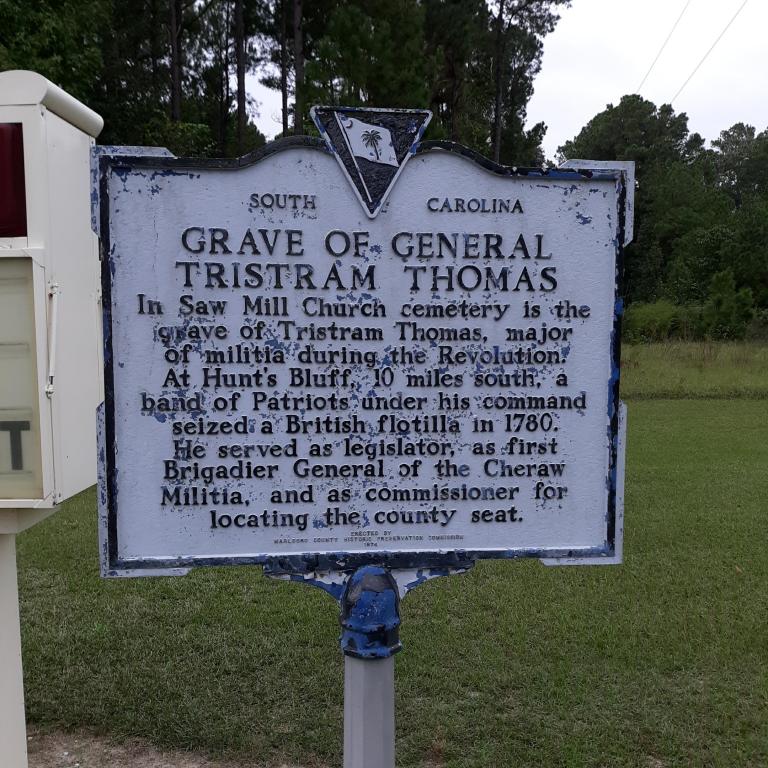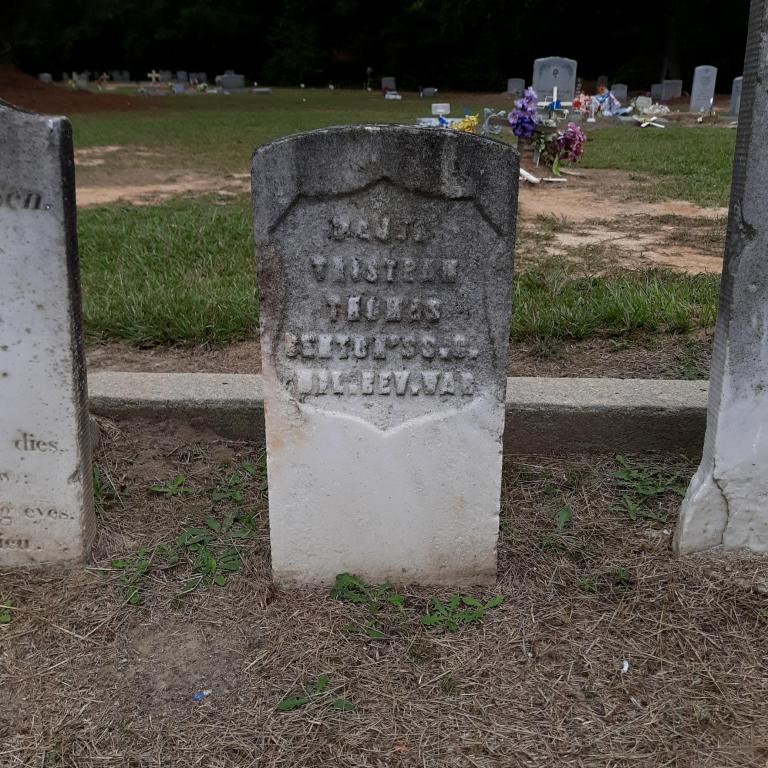Tristram/Tresham/Tristam THOMAS Sr
SAR Patriot #:
P-303883
The following information was assembled from numerous sources and cannot be used directly as proof of Qualifying Service or Lineage.
It is considered a research aid and is intended to assist in locating sources that can be used as proof.
State of Service: SC
Qualifying Service: Major
DAR #: A113198
Birth: 28 Jul 1752 / / MD
Death: 03 Sep 1817 / Marlboro Dist / SC
Qualifying Service Description:
- Served under Colonel Benton, and Colonel Hicks and Hobbs
- Was a representitve for St David's Parish - 1782
- Colonel in SC
Additional References:
- SAR Patriot Index Edition III (CD: PP2210, Progeny Publ, 2002) plus data to 2004
- SC Arch Acctrs Aud #7735 roll #145 Bio Dir of the SC House of Reps, Vol III, pg 717-712
Spouse: (1) Ann Pledger; (2) Mary Hollingsworth
Children: Philip; Robert T; Susannah; Elizabeth;
Members Who Share This Ancestor
| Date Approved | Society | ACN | SAR Member Info | Lineage via Child | View Application Detail | |
|---|---|---|---|---|---|---|
| 1966-04-29 | NC | Unassigned | John Morrison Stephens III (93093) | Elizabeth | ||
| 1966-04-29 | NC | Unassigned | Edwin Lawrence Miller Jr (93094) | Elizabeth | ||
| 1967-05-15 | TX | Unassigned | William Oates Caraway (95358) | Susannah | ||
| 1967-11-08 | FL | Unassigned | James Glover Waits (95974) | Joseph | ||
| 1972-04-26 | CA | Unassigned | Ottis Lee Cooper (102643) | Joseph | ||
| 1986-01-16 | SC | Unassigned | William Blackwell Seddinger (126925) | Robert | ||
| 1987-06-15 | LA | 225151 | Edward Neil Henderson (129560) | Susannah | ||
| 1987-09-11 | LA | 224621 | Robert Edward Henderson (129912) | Joseph | ||
| 1987-09-22 | LA | 224686 | Bruce Cleveland Henderson (129958) | Joseph | ||
| 2001-01-17 | GA | 8220 | Everett Ellis Porter Jr (154995) | Elizabeth | ||
| 2016-03-29 | KS | 68620 | Gary David Long (198101) | Elizabeth | ||
| 2016-03-29 | KS | 68621 | Mark Edward Long (198102) | Elizabeth | ||
| 2018-01-12 | SC | 78870 | Robert Horton Slade (205992) | Elizabeth | ||
| 2021-04-23 | MO | 96703 | Samuel Duncan Thomas Jr. (218974) | Philip |
Location:
Bennettsville / Marlboro / SC / USA
Find A Grave Cemetery #:
Marker Type:
SAR Grave Dedication Date:
Comments:
Photos displayed courtesy of Gerald Adams, SC SAR
Directions to Cemetery / Gravesite:
- From the intersection of Main St and Broad St (Marlboro County Courthouse) in Bennettsville, SC, take West Main St W/SW for roughly 5 miles to the intersection with Willamette Rd on the right. Take Willamette Rd for roughly 4 miles to the church on the left. There is also a historical marker at the end of the church road
- Follow the driveway on the right side of the church. Immediately after passing the back corner of the main church building, the stone is on the right side, next to the parking lot. There is a stone border around the family's graves. Tristram is on the far left in the family plot


